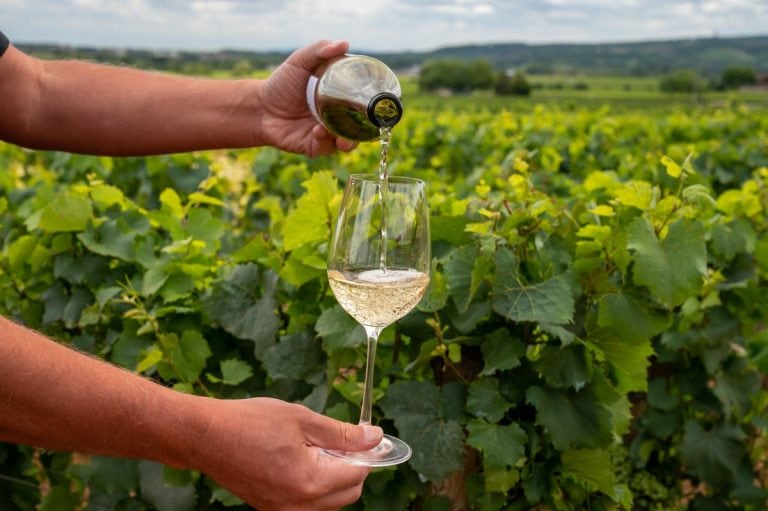For a long time, Pinot Blanc has been a subject of discussion among ampelographers. Its genealogy seems to trace back to Pinot Noir, of which, like Pinot Grigio, it is a genetic mutation. Yet, for decades, this grape variety was confused with Chardonnay, and only in the '80s, when things became clear, did it appear in the DOC (Denominazione di Origine Controllata) registers. Originally from Germany, where it manages to express the best qualitative results absolutely, this grape is widespread in Alsace and the wine regions of the New World. In Italy, it is cultivated in Lombardy, Veneto, Friuli Venezia Giulia, Trentino, and Alto Adige. However, the most appreciated Pinot Blanc wines come from the most suitable areas of Friuli and Alto Adige, where the grape can express itself, thanks to low yields per hectare, as a great structured, soft, and full-bodied white wine. Suitable for sparkling wines, it is found in cuvées of sparkling wines such as those from Friuli, Trentino, and Franciacorta.
Tre Bicchieri 2024. The Best Terlano Pinot Blancs
Here, we focus on the Terlano Pinot Blanc wines that have been awarded Tre Bicchieri on the Gambero Rosso Vini d'Italia 2024 guide. One of them is the Abtei Muri Ris. 2020 from Cantina Convento Muri-Gries, which, after about a year and a half of aging in oak, offers a refined aromatic ensemble of white fruit and flowers on the nose, enhancing the palate with the wine's salinity and tension. The grapes come from a single vineyard in Appiano at 550 meters. The tiny Piazza Gries is the symbol of a district of Bolzano that less than a century ago was an independent village dedicated to agriculture. Today, in addition to the Abbey of the Benedictines and some historic buildings, there is the Klosteranger vineyard, just under 3 hectares cultivated with Lagrein, representing the highest qualitative expression of the Bolzano grape in Muri's house. The production relies on the vineyards of the city basin and the extensive viticultural platform in the Appiano area.
The other is the Vorberg Ris. 2020 from Cantina Terlano, which, if immediate and bright at first glance, is slower and more rhythmic on the nose, with the fruit revealing itself gradually, surrounded by floral notes and a delicate mineral nuance. In the mouth, it is full and juicy, with great length. The wine is thus in perfect balance between substance and tension. Terlano and Andriano lie on two cones facing each other, almost mirroring each other, with the course of the Adige River and the wide valley floor dividing them. In 2008, the two oldest cooperatives in the region merged, and since then, Rudi Kofler has been managing the technical direction, with the aim of enhancing not only the work of the members but also the peculiarities of the two areas. The vineyards of Andriano are on limestone soils, while beyond the river, it is porphyry that characterizes the soil. A lineup of wines that impresses with its continuous quality and stylistic consistency.


 Meloni: "Tariffs? If necessary, there will be consequences. Heavy impact on agri-food sector"
Meloni: "Tariffs? If necessary, there will be consequences. Heavy impact on agri-food sector" The Government honours the greats of Italian cuisine, from Bottura to Pepe. Massari: "Thank you, Meloni, the only one who listened to us"
The Government honours the greats of Italian cuisine, from Bottura to Pepe. Massari: "Thank you, Meloni, the only one who listened to us" "We must promote a cuisine that is not just for the few." Interview with Massimo Bottura
"We must promote a cuisine that is not just for the few." Interview with Massimo Bottura Wine was a drink of the people as early as the Early Bronze Age. A study disproves the ancient elitism of Bacchus’ nectar
Wine was a drink of the people as early as the Early Bronze Age. A study disproves the ancient elitism of Bacchus’ nectar "From 2nd April, US tariffs between 10% and 25% on wine as well." The announcement from the Wine Trade Alliance
"From 2nd April, US tariffs between 10% and 25% on wine as well." The announcement from the Wine Trade Alliance






